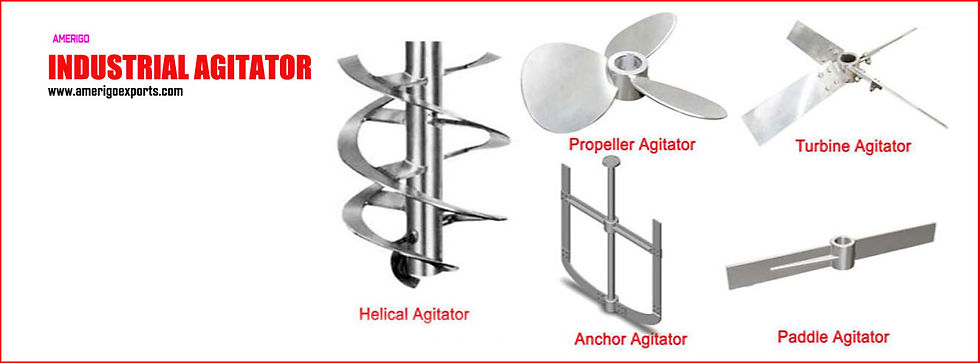Types of Pulsation Dampeners - 2024
- Amerigo Exports
- Apr 15, 2024
- 2 min read
Pulsation dampeners, also known as surge suppressors or pulsation attenuators, are devices used in fluid systems to reduce pressure fluctuations or pulsations caused by reciprocating pumps or compressors. There are several types of pulsation dampeners, each designed for specific applications and operating conditions. Here are some common types:
Bladder-Type Dampeners: These dampeners consist of a flexible bladder or diaphragm that separates the gas or liquid from the compressible gas or fluid used to dampen pressure fluctuations. As the pressure fluctuates, the bladder expands or contracts to absorb the pulsations.
Hydraulic Accumulators: Hydraulic accumulators use a piston, bladder, or diaphragm to separate the gas and fluid. They work by compressing the gas or fluid when pressure rises, then releasing it when pressure drops, thereby smoothing out the pulsations.
Gas Bag Dampeners: Gas bag dampeners utilize a gas-filled bladder to absorb pressure fluctuations. As the pressure increases, the gas compresses, and as it decreases, the gas expands, dampening the pulsations.
In-line Pulsation Dampeners: These dampeners are installed directly in the fluid line and typically consist of a chamber filled with a compressible gas or fluid. They absorb pulsations by compressing the gas or fluid when pressure increases and expanding it when pressure decreases.
Elastomeric Dampeners: Elastomeric dampeners use rubber or elastomer materials to absorb pressure fluctuations. They are often used in low-pressure applications and are relatively simple in design.
Weight-Loaded Pulsation Dampeners: These dampeners use a weight-loaded piston to absorb pulsations. As pressure fluctuates, the weight moves up and down, dampening the pressure variations.
Spring-Loaded Pulsation Dampeners: Similar to weight-loaded dampeners, spring-loaded dampeners use a spring-loaded piston to absorb pulsations. The spring compresses and expands in response to pressure changes, smoothing out the fluctuations.
The choice of pulsation dampener depends on factors such as flow rate, pressure range, fluid type, and application requirements. Each type has its advantages and limitations, and selection should be based on the specific needs of the system.





Comments